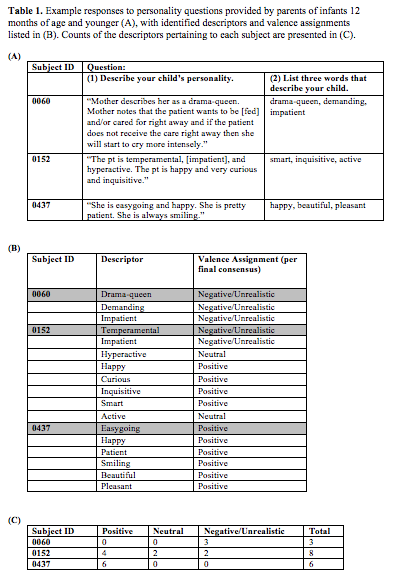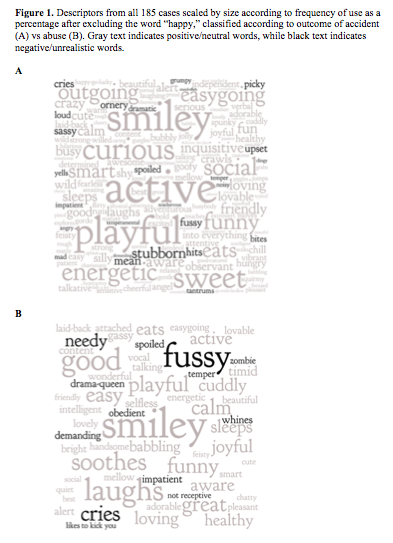Presenting Author:
Principal Investigator:
Mary Clyde Pierce, M.D.
Department:
Pediatrics
Keywords:
infants, physical child abuse, screening tools, predictors, negative descriptors, attributions
Location:
Ryan Family Atrium, Robert H. Lurie Medical Research Center
C94 - Clinical
Identifying infants at risk of physical abuse: negative/unrealistic parental descriptors
Background: New screening tools are needed to help medical providers better identify infants at risk for physical abuse. A first step in creating a useful screening tool is to identify potential predictor variables that have both significance and clinical utility. Caregivers’ perceptions of child behavior strongly influence their responses and may be important predictors of physical abuse. Objective: Our goal was to determine whether infants described by caregivers with negative or developmentally unrealistic words were more likely than other infants to have been physically abused. Methods: As part of a prospective observational study investigating bruising and familial psychosocial characteristics, structured interviews were conducted at five freestanding children’s hospitals. Descriptors of infants 12 months of age or younger were identified from parent narratives and each classified as positive, neutral, or negative/developmentally unrealistic (as illustrated in Table 1). Four independent researchers performed qualitative data coding analyses following the grounded theory approach. We analyzed the prevalence of negative/unrealistic descriptors in association with abusive or accidental injury, as determined by medical expert panel (MEP) consensus. MEP members were blinded to the descriptive parent narratives when making these determinations. Results: Of 185 children enrolled, the MEP categorized 147 cases (79%) as accidental and 38 (21%) as abuse. Infants 0-6 months of age were more likely to have been classified as abused (25 of 62 cases, or 40%) than those 7-12 months old (13 of 123 cases, or 11%; p < .001). Parents used at least one negative or unrealistic descriptor in 35 of the 185 total cases (19%; see Figure 1). Of the 150 infants described with only positive or neutral terms, 17 (11%) were abused, compared to 21 (60%) of the 38 infants described with one or more negative/unrealistic words (p < .0001; age group-adjusted odds ratio 9.95; 95% confidence interval [3.98, 24.90]). Among 0-6 month olds, 72% of children described with negative/unrealistic words were abused, compared to 27% of those described with exclusively positive/neutral words (p < .003, odds ratio 6.69, 95% confidence interval [1.78, 29.50]). Similarly, among 7-12 month old children, 47% of those described negatively or unrealistically were abused, compared to only 5% of those described with exclusively positive/neutral terms, (p < 0.0001, odds ratio 17.13, 95% confidence interval [4.02, 82.39]). Conclusions: Infants described by caregivers with negative or developmentally unrealistic words were more likely than other infants to have been physically abused, as determined by the MEP. Though limited by sample-size, this derivation study will inform future work in creating a screening tool for the acute care setting utilizing negative/unrealistic parental descriptors in conjunction with developmental capacity to identify infants at high risk for physical abuse.


